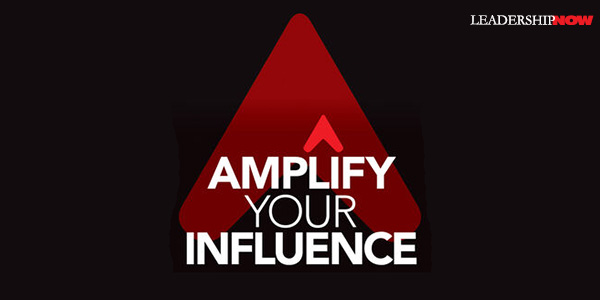 |
 |
05.24.22

Amplify Your Influence
LEADERSHIP is intentional influence. Influence is a science that can be learned. Understanding how the brain functions is key to developing greater influence. René Rodriguez, the author of Amplify Your Influence, says influence is “about understanding how our brains, and those of our audience, process information.” The brain uses the reticular activating system (RAS) to sift through all of the messages we are bombarded with at any given time. From our vantage point, it filters out what is important and what we can ignore. As communicators, we have to learn how to appeal to our audience’s RAS to gain their attention. Working with the brain, our ideas can gain faster acceptance and is the idea behind the Amplifii Method. Frame > Message > Tie-Down The Amplifii method is a three-step sequence. Rodriguez tells us that sequence is everything. “Sequence is positioning your message and delivery of a message, story, or presentation in a way that aligns with the biological and neurological makeup of how our brains are wired to receive it.” Frame If you don’t provide the frame for your message, the audience will provide their own frame based on their past experiences, which may run counter to your intended message. If we don’t frame the message, we will lose it. “Story is a powerful device to control the narrative. But there are many other framing devices, too, including props, quotes, jokes, statistics, and even music.” The frame is designed to draw in your audience, create credibility, and build trust. But it does not build influence. “The frame sets the context for you to deliver your value proposition or core message. If delivered effectively, the message sets the stage for influence.” Message The goal of the message is to be clear and eliminate the need for assumptions of the part of your audience. It is essential to have a unique perspective. “To have influence, we must not only get others to see things from our perspective but fully understand their perspective as well.” When using clichés—and they can be powerful and sum up a lot of meaning—always qualify them. Acknowledge it is a cliché, and then explain exactly what it means to you and your audience. With the frame and your message, your audience doesn’t know where you’re going until the tie-down. That way they don’t jump ahead and fill in their own frames and conclusions, and so they remain open to your message and tie-down. Tie-Down The tie-down gives meaning. The frame and message without a tie-down are “like a joke without a punchline. It’s unfinished and doesn’t add value.” The tie-down explicitly outlines the precise value of the message in the context of what is important to the audience and their current needs. When you can accomplish all that, the magical outcome is influence. Naturally, self-awareness plays in your ability to influence anyone or anything. “Anyone can learn the skill of influence, but if we lose sight of how our behaviors affect those around us, those skills are for nothing. No skill or technique will make up for a lack of judgment or being tone-deaf.” A Very Simple Example Of all the examples Rodriguez gives, this example quickly gives you a taste of the Amplifii process. In a job interview, Janice is asked, “Tell us something you’re proud of in your life.” She responds, “I earned straight A’s my senior year in high school.” The answer is straightforward and direct. And gets the job done. But it leaves the listeners open to process it any way they want through their own biases and experiences. They can think she finally worked hard her senior year, or maybe she was privileged and had everything handed to her. Without providing a frame, what she was trying to convey could easily be lost. A better answer using the Amplifii process looks like this: FRAME: “Unfortunately, growing up, I was surrounded by adults who told me I wasn’t very smart. When adults tell you that as a child, you begin to believe it, and I hard a hard time in school. But something happened in my senior year in high school. I looked at myself in the mirror and said, ‘I’m either going to believe them forever or I’m going to do something about it and prove them wrong.’ I decided I was going to do something about it. And I did. 
Posted by Michael McKinney at 02:29 PM
|
BUILD YOUR KNOWLEDGE
 

How to Do Your Start-Up Right STRAIGHT TALK FOR START-UPS 
Grow Your Leadership Skills NEW AND UPCOMING LEADERSHIP BOOKS 
Leadership Minute BITE-SIZE CONCEPTS YOU CAN CHEW ON 
Classic Leadership Books BOOKS TO READ BEFORE YOU LEAD |